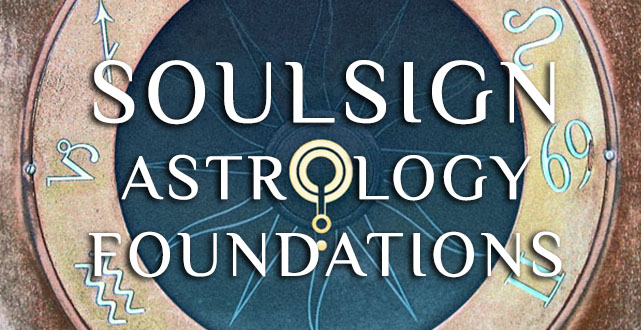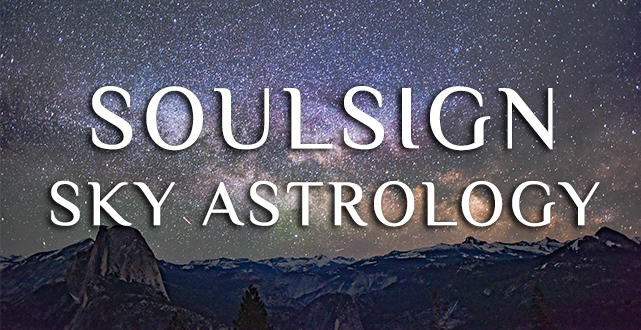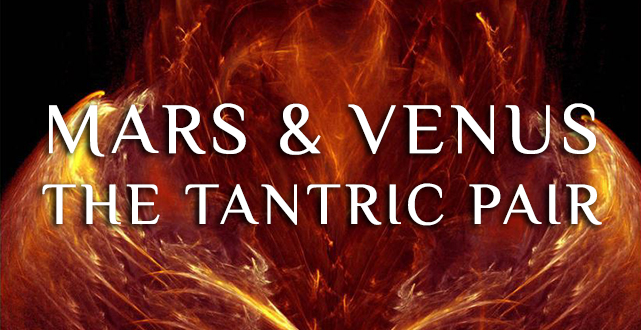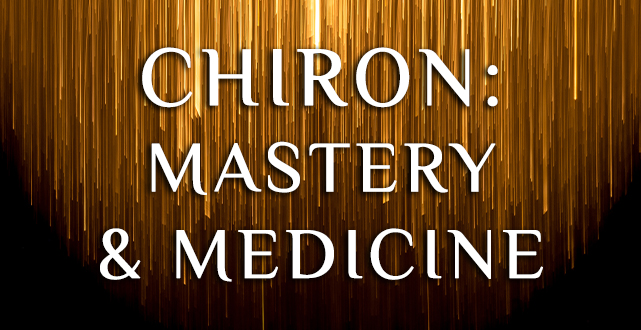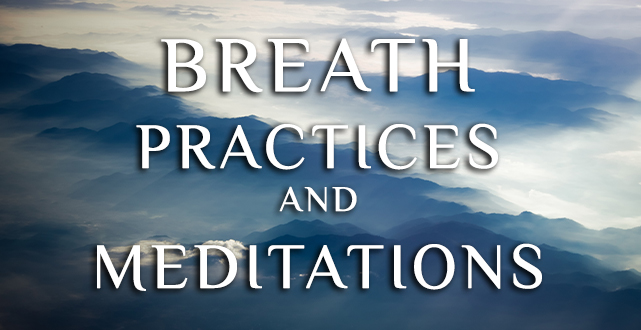In the spirit of research and discovery, this article offers a listing of some of the key events leading to and following the Transit event. Rather than beginning with the Transit as the focus and building a case for how I render it astrologically, I’ve selected events that might be otherwise missed, such as Venus’ visible brightnesses, elongations from the Sun, and star occultations to name a few. Phases refer to distinct sub-periods within the geocentric Venus-Sun synod which I count at 13 and is the subject of my latest book, THE LIGHT OF VENUS: Embracing Our Deeper Feminine, Empowering Our Shared Future1. All longitudes are tropical.
Applying Events
Feb 8 (0 Aries) – Venus ingress Aries. Of her five cycles for any 8-year pentacular period, Venus crosses the vernal point a total of either 7 or10 times (without or with a retrograde loop). This February’s crossing is the strongest of those. None of her other ingresses throughout the eight years bring her this close to the ecliptic, a mere 32’ of southern latitude. Standard interpretation for an Aries Ingress applies, but with stronger Venusian themes: asserting specific forms of relationship, defending material status, reactionary strategies. In terms of the coming Transit (still 4 months out), the Venusian ingress portends something bold, revelatory and perhaps shocking.
For researchers, this 8-year pentacle has Venus ingressing the vernal point 10 times:
8 February 2012
21 March 2013
2 May 2014
20 February 2015
5 April 2016
3 February 2017
2 April 2017
28 April 2017
6 March 2018
20 April 2019
March 24 (22 Tau) – Venus enters Wholeness Phase. The Wholeness Phase is one moniker for a unique sub-period within the Venus-Sun synodic cycle.2 The Wholeness Phase, like the other twelve Phases in this cycle correlate to a distinct mythological and developmental framework within which we can understand zodiacal positions and aspects. This technique is identical to, say, delineating a Gemini Moon within the Disseminating Phase. The former is ‘content’, the latter provides ‘context.’ Unlike the Rudhyarian system of equal lunar phase lengths, Venus’ phases are of unequal period and are rooted in ancient techniques of sky observation. This is consistent with ancient precedent, such as the Hellenistic system of 11 unequal, lunar phases.3
March 27 (23 Tau) – Venus-Sun maximum evening separation. This suggests a fully autonomous Venus, and a stable, established feminine (not female) environment for us, inwardly and outwardly. Perhaps our sharper edges are softened or tangible progress results from surpassed social obstacles. Our expected shoring up of material bases here serves not just security needs but perhaps a somatic preparation for the Transit. “We stand in our sovereignty, inwardly stable and capable of both holding space for others and acting boldly on our own behalf.”4

April 3 (0 Gem) – Venus ingress Gemini. It seems logical to apply the idea of a retrograde shadow period to an event as momentous as the Transit. If viable, this suggests that the earth’s first receipt of a Gemini-light engorged Venus at the Transit actually begins here, 2 months earlier. Events materializing here, likely also carrying influence of the Pleiades occultation, may become super-illuminated, regardless of their readiness.
April 27 (18 Gem) – Venus maximum evening brightness (apparent magnitude). This suggest a fully disseminative Venus at her greatest beneficence, altruism, compassion or other exalted feminine quality. It is an undeniably beautiful experience to see Venus at her maximum brightness in either morning or evening skies. Colleagues are strongly encouraged to dedicate time each Venus magnitude, morning and evening, to viewing her. In both East and West, there is ancient precedent for associating light with the feminine principle rather than the masculine7.
Along with reaching her brightness, Venus will significantly reduce her apparent speed as well. This begins the closing of her ‘evening sky sweet spot,’ my colloquial for the 35± days in which she literally hangs in the sky at or near full brightness.
A little-known fact about Venus’ brightness can be illuminated here. Venus’ maximum brightness in the evening is a range rather than an exact calendar event. Each 19 months as Venus enters this range of days, she will enter the same degree by longitude that houses her inferior conjunction about 5 weeks later. In other words, Venus maximally illuminates to us from the same degree as when she is maximally invisible or cazimi. 8 This year, Venus’ brightness occurs north of the Transit (by 4° of latitude).
May 14 (24 Gem) – Venus SRx at El Nath; start of Venus Completion Phase. The Completion Phase encompasses the entire period of Venus’ visible evening-sky retrogradation, usually 16 days in length. The image of a Feminine Elder or “Mature Juicy Lady” personifies the phase’s qualities. Developmentally, Completion governs the mysterious exchange between our youthful liveliness and our elderhood’s wisdom. As the former lessens with age, our wisdom and clarity about reality can shine more directly. Natives with a Completion Phase Venus continually must return to their inner sense of things. The inner life (retrograde, diminishing light, increasing speed) is discovered to be the vehicle and motivation for meaningfully contributing to the world. In fact, It is arguably the most dharmic of all the Phases.9 Metaphorically,
The Completion Phase begins with Venus’ retrograde station during the end of her maximum brightness. In 2012 Venus stations strikingly close to the star El Nath (beta Tauri), sharing that star’s space for arguably 19 days within 3° orb. Thus, El Nath’s significations are worth including here for your review.
“With Venus: Favorable for gain, enemies who are powerless to injure.”10
“El Nath among the Hindus represented Agni, the god of fire…also the similar Hutabhuj, the Devourer of the Sacrifice.”11
“El Nath is the tip of the [northern] horn…. It was viewed as the force of the Bull, thereby having power over the waters or blood of life…. [It] is a weapon which can be used for good or for ill.”12
“Astrologers said that El Nath portended eminence and fortune to all who could claim it as their natal star.”13
El Nath signifies a primal force (fire, blood of life) which Venus seems to thoroughly respect by taking sufficient time (stationary) to learn to wield such power. In exchange, she stops her forward movement and begins decreasing in light very quickly after. Her stoppage here is a sacrifice to the spatial reality she moves in (Saturn).
Interestingly, the inception of this 18-month direct period began at Venus’ station direct on 11 November 2010 at 27 Libra. Here at 24 Gemini 00, she now stations retrograde forming a near-partile trine with Saturn at 24 Libra 04, who is occupying a degree very close to her former station direct degree. A Saturnian theme here seems to be learning to responsibly wield one’s power or light-force (Venus brightness) with or over others.
May 20 (0 Gem) – Annular Solar Eclipse. Though not directly involving Venus, this eclipse conjuncts the Pleiades (see above) perhaps extending our reach into non-ordinary states. If eclipses in general temporarily reconstruct our spatial-temporal experience, then this eclipse must be seen as co-contributing to the larger Transit effect (another form of eclipse) two weeks later. Perhaps our short-term memories drop away or become unreliant (0 Gemini) or confusedly try to take over our long-term memory banks. Certainly, what passes for knowledge will come under serious scrutiny at this time.
May 31 – (19 Gem) – Venus enters Transition Phase, disappears. This is the final Phase in Venus’ current Light-Cycle, which begins with her heliacal setting and ends at her inferior conjunction which for us is the Transit event. This is the ‘quiet’ before the stories, tales hundreds of thousands of us will tell of our Transit time. Venus quickly picks up retrograde speed from now until the Transit, surpassing any of her other rates of acceleration. Fast speed correlates to increased or heightened experience. A tremendous amount of information is being processed now, as her sky path traces precisely down the north horn of the Celestial Bull towards its apex, the Hyades.
June 1 (18 Gem) – Venus conjunct Mercury at NGC1746. This planetary conjunction is also an occultation as they share nearly the same latitude, intensifying the merger of their functions for us. Body and Mind become interchangeable, if for only a few moments. NGC1746 seems to suggest a very ancient stellar influence on early humanity, as it is located in the midst of the ancient Bull’s Horns and lives in our own arm of the galaxy (Orion Arm).
 1 June - Venus occults Mercury |
 1 June - Venus occults Mercury |
VENUS TRANSIT EVENT
June 5 (15 Gem 45) – Venus Transit; Inception Phase begins. Venus is at her top retrograde velocity, cazimi or “in the heart of the Sun,” and also at perigee. Of course the Venus Transit is a rare version of an inferior conjunction, being also visually observable as well. Together, these factors create an extreme dispensation of feminine consciousness, something I hold to be quite positive and independent of individuals’ responses to it.
In my work with the Venus-Sun synod or “light-cycle”, the inferior conjunction marks the changeover from one synod to the next.14 Today sees the final breath of the former Scorpio cycle (since 28 October 2010) and the first breath of the new Gemini cycle. The sign of a cycle characterizes the overall or collective intention of the feminine dimension of earth and humanity, however one may work with it. Within this 19-month period, many shorter sub-periods exist, such as the entire morning-sky period, the period between inferior and superior conjunctions, and so on.
Perhaps the most fascinating aspect of the Transit event is the inversion of means by which she is visible to us. Rather than reflecting to us the Sun’s light as her own, sometimes dramatically so, here she ‘presents’ herself by standing out amidst the engulfing rays of the Sun. During a Transit, we see not Venus but her shadow, her outline, reminding us that our feminine nature contains our interior depth (Venus as black orb). As Venus crosses the Sun’s disc, she is an outwardly-illuminated, yet vacuous marker of that same depth within us. It is hard to miss the Gemini symbolism of this image: opposites or twins (i.e., dark/light or form/field) which necessarily rely on one another for their existence; the principle of duality; and its transcendence. Yet in this case, we should not look for events of a transcendent nature but those of immanent nature, this being feminine Venus after all.15
The Sabian for 15 Gemini: Revealing one’s social passions. The inner battle between the masculine and the feminine. Taking it to the streets. Announcements. – Hill, Lynda, The Sabian Symbols as an Oracle, White Horse Books, 1995, 2002.
Venus crossing the Sun’s disc from Earth is an astrophysical representation of a lesser-known archetype known as the solar feminine. This way of rendering the Transit event crept into my thinking after first viewing a computer animation of Venus forming a reverse-Z shape perfectly aligned to both Horns of the Bull. While every inferior conjunction of Venus and the Sun invokes a solar feminine array of energetics for us, a Transit is clearly the most intensified type. If Venus is our interior reality of feeling, body and place, desire for comfort and beauty, then she is our unavoidable, magnetic attraction to life and being connected with the world. If the Sun is our light force, indiscriminately shining in all directions and animating our physiology, then it horoscopically signifies our personal mode of radiating trans-personal energy back out into the universe. Combining Venus and the Sun in this way, we come up (or down?) with something like:
Venus + Sun =
Light Found Within
Wholeness from Inside Out
Enlivened Femininity
Illuminated Feeling
Light Body
Mundane or natal aspects and the house position of the Transit will naturally speak to specific manifestations, which are beyond the reach of this short article. The core transmission of energy and information from the Transit event will manifest through us for the next 19 months of the Gemini light-cycle, through 11 January 2014 when the next Capricorn cycle starts.
SEPARATING EVENTS
June 27 (7 Gem) – Venus enters Fullness Phase in Hyades. The Fullness Phase begins with Venus’ morning-sky, visible station direct. Fullness also signals to us that Venus is quite bright in the morning-sky during her Gemini Light-Cycle. Here she does her turn-around at the apex of the Bull’s horns. But if the Horns are instead rendered as legs or loins of a celestial female or birthplace, then the Hyades would be her generative area. From El Nath on May 14, Venus has tracked closely down the northern Bull’s Horn, actually entering Hyades-ville via occultation with Ain (epsilon Tauri). This visible but dim star roots back to the ancient Hebrew Ain Soph or the un-manifest, unknowable God, a mystical symbol if there ever was one.16 She takes approximately 2 weeks to turn around while inhabiting the Hyades sisters.
For me, the Hyades can represent ‘consensus mind’ with its full force of momentum behind it, or “long memory” as seen in the trans-cultural association of them with water, fluid and fecundity (water holds memory).17 Perhaps Venus here, post Transit, is being imbued with ancient memory or pattern as impetus to create new patterns.
July 9 (9 Gem) – Venus reaches maximum morning brightness, conjunct Aldebaran. By this point, Venus is the brightest she can be in our early morning skies reaching a brilliant -4.65 magnitude. With the re-establishment of her own light once again, she connects to one of the four Persian great stars, Aldebaran. The ancient Hebrew root for this star- debir – refers to a shrine, a sanctum and the act of arranging. It’s the name given to the Holy of Holies in the Solomon Temple, housing the Ark.15 Aldebaran was also the heart star of the Great Bull for many ancients, which for us can be seen as our first tangible awareness of the Transit’s effect through our heart or feeling function.
The Gemini Transit and surrounding events drew me to this sentiment which describes both Gemini and greater inclusiveness (feminine) as much as it calls for a integration of old and new:
“One way [modernity’s rejection of any world-view] might be transcended is by bringing back that which modernity has discarded as obsolete, to effect a synthesis of the old and the new. Such “double-coding”…potentially makes possible a creative fusion of ancient wisdom and modern science by which the inherent limitations and one-sidedness of the modern rational-scientific world view might be overcome and a new integral world view developed. It is just this kind of integral approach that is necessary to understand the astrological perspective.19
VIDEO: Readers interested in watching the real-time movements leading to the Transit are invited to view the video I created for my blog here >
NOTES
1 The Light of Venus is offered for pre-sale from this site and includes reduced shipping and a special gift.
2 Synodic cycles are based in the longitude separation between the two bodies.
3 Gieseler-Greenbaum, Dorian, “Metaphors from Birth to Death in the Phases of the Moon”, 2003.
4 Gainsburg, Adam, “Venus Journey Calendar – 2010-2012”. See the Astrology Calendars >
5 The Pleiades are recorded over 4000 years ago in Chinese astronomical text, listed at the first nakshatra in the Vedic lunar zodiac, and even were used to title a precessional cycle. See Allen.
6 This interpretation is original, yet is based in source material from Rosenberg, Diana, “Workbook of Fixed Stars”, 2002.
7 Though in more recently ancient times – Hellenistic Greek, post-dynastic Egypt – light was the indication of solar=masculine deities, most of the major traditions in their mysticisms ascribed light to the cosmic feminine. Indian Vedanta, Buddhist Vajrayana and Kabbalism are examples. The rationale seems to have been based in a perennial correlation of the universe itself as feminine (body, form, mutability) since the most ancient times. Light too then would fall into this category: anything that can shine can also go dark.
8 Natal bodies located within this range of longitude degrees can feel as if being put through a rollercoaster of high-to-low, success-to-failure, or extroversion-to-introversion. The Venus-related themes can be the most influenced by this rather dramatic change in influence.
9 Dharma is an eastern concept conveying many meanings. Its usage here refers to social involvement for improving society at either a small or large scale.
10 Robson, Vivian, The Fixed Stars & Constellations in Astrology, Astrology Classics Publishing, 1923, 2005.
11 Allen, Richard Hinckley, Star Names: Their Lore and Meaning, Dover Publications, 1899, 1963.
12 Brady, Bernadette, Star and Planet Combinations, Wessex Astrologer, 2008.
13 Allen, ibid.
14 Cycles or “journeys” are named by Venus’ sign at her morning-sky heliacal rise which occurs a week after inferior conjunction. The heliacal rise, or her “Birth Phase,” is our first sky view of her before sunrise. Naming the complete cycle by Venus’ sign here is analogous to astrology’s reliance on the birth chart rather than the conception chart. Venus’ inferior conjunction is her conception or Inception Phase, while Venus’ heliacal rise in the morning is her Birth Phase. This convention was first demonstrated by astrologer Daniel Giamario. It is not the only method for naming a cycle. Ariel Guttman and Gary Caton are two astrologers I know of who prefer the sign of the conjunction to the sign in their work.
15 The feminine mode of piercing through duality constructs is known as immanence, not our transcendence. To “immanate” (admittedly I’m inventing a new verb) is to enter the infinitely-inward universe, in contradistinction to transcendence’s infinitely-outward dimension. This immanent process can bring us through our superficial and authentic feeling bodies, through our cultural and genetic programming, and into a non-temporal, unitive state of being. Such a process has been described for thousands of years by eastern tantrics in India, Japan, and elsewhere. If viable, this would be a distinctly feminine mode of Gemini expression.
16 This rendering of this star is entirely my own. I accept full responsibility for any karmically horrendous repercussions from its assertion.
17 Diana Rosenberg has the Hyades as “forced to choose” with an “inner toughness that makes them stubborn, [and] formidable to deal with when confronted head-on.” See note 6.
18 From an unpublished manuscript by ret. Navy Commander William S. Buehler, a former biblical post-grad at American University. Used with permission.
19 leGrice, Keiron, “Beyond a Disenchanted Cosmology”, Archai Journal, Jan 2011,
RECOMMENDED LINKS:








